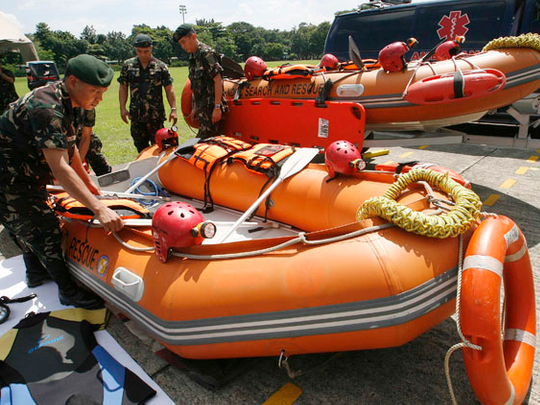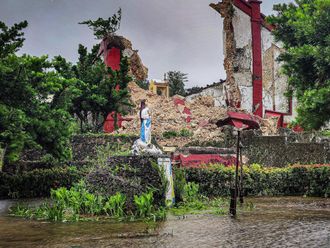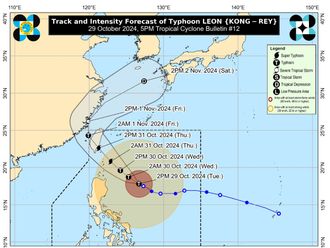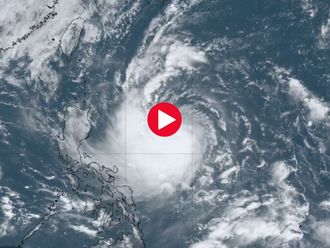
Manila: Evacuations began as 20 provinces and emergency response units were placed on alert before typhoon Megi makes landfall in the north eastern portions of the main island of Luzon.
Thousands of people have already temporarily relocated from communities along the Cagayan river system, which had overflowed during previous typhoons.
Typhoon Megi, which intensified into a super typhoon, would be felt on Sunday in the north of Luzon, a rice and corn growing area on the Philippines main island, and the government advised the up to 7 million people in its direct path to stock up on food and medicine.
Government forecasters said waves off the east coast could be greater than 14 metres, and advised against travel to the region as Megi could bring flash floods, landslides and storm surges. Manila was not expected to be affected by the typhoon.
The approaching typhoon triggered warnings in 19 northern Philippines provinces with forecasters expecting it to intensify to a super typhoon as it makes landfall on Monday.
Warnings were issued against sea travel and the government said Megi was expected to bring flash flooding, landslides and storm surges.
Science and Technology Secretary Mario Montejo said the government was alarmed at the speed and strength of typhoon Megi (local codename: Juan), which may have devastating effects in Northern Luzon provinces.
Montejos' department is in charge of the Philippine Atmospheric, Geophysical and Astronomical Services Agency (Pagasa). He warned that maximum winds may reach over 200 kilometres per hour by tomorrow morning, when the weather disturbance is expected to start moving to the northern tip of the Cagayan province.
"It is not likely to hit Metro Manila," government weather forecaster Anthony Lucero told a news conference. "... But once it makes landfall, Metro Manila residents may feel its effects because it is expected to affect a large area."
In preparation for Megi's onslaught, Benito Ramos of the National Disaster Risk Reduction and Management Council (NDRRMC) said the police, coast guard, the Red Cross, civilian volunteers and various branches of the armed forces have been notified of possible immediate action.
He added that the civil defence's operation centres in different regions have been put on "alert status" and are prepared to take "precautionary measures such as pre-emptive evacuation of families in low-lying areas and near mountain slopes as necessary".
Advance measures
Ramos said emergency response assets, such as rescue boats as well as relief goods, have been pre-positioned in various parts of northern Luzon, as well as Metro Manila, in anticipation of Megi.
In the National Capital Region (NCR), Ramos said the Department of Health-NCR and the National Capital Region Police Office have been also alerted.
He added that the Department of Social Welfare and Development, which is attached to the NDRRMC during periods of calamity preparations, has pre-positioned family food packs and non-food items at the evacuation centres in six regions of the country, including the National Capital Region.
With input from agencies













